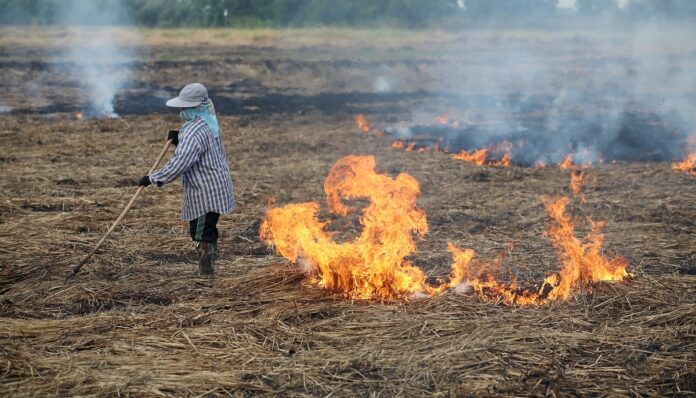It is a new season and most farmers will soon start preparing their lands for the significant planting of various crops. Most of these farmers are beginning to appreciate the need and importance of no-till under conservation agriculture.
Read also: No-till (Conservation) farming vs Conventional Tillage Agriculture
We look at Land Preparation Under No-till Agriculture and the various scenarios during land preparation.
The Concept of No-till Agriculture
Under no-till agriculture, farmlands should have enough vegetative cover with no disturbance to the soil structure. In other words, do not burn the vegetative residue after clearing and do not turn the soil.
Importance of good land preparation under no-till agriculture
- It reduces the cost of production.
- It reduces the incidence of weeds.
- Soil structure is protected and improved.
- Crop yields increase.
- Reduces the loss of water from the soil.
- Improves soil nutrients.
Now let us look at the various situations that a farmer may encounter during land preparation under no-till and how to go about them.
1. Clearing land with the dominant vegetation being grasses and shrubs.
Grasses, shrubs and other similar vegetation are relatively manageable when it comes to clearing them on the farmland. Clear them and leave them on the land. As much as possible, spread them evenly to cover every surface of the land.
This is very important in land preparation under no-till agriculture.
This vegetation residue is going to provide many benefits to the soil and the plants during the growing season. This importance includes water retention and infiltration, moisture conservation, improvement in soil structure and nutrients, prevention of weed growth; and many more.
Read also: Soil Structure and the Factors Affecting Soil Structure
2. Land with big trees and other woody vegetation.
Some big trees on farmlands are very beneficial to crops by creating a decent amount of shade and also in nutrient recycling. They draw nutrients from deep soil to develop their systems, including their leaves. Their leaves drop and decompose to release the plant nutrients to the surface where the plants’ roots can access them. They have additional benefits too.
Therefore, in handling big trees, be strategic. Do not cut down all the big trees, especially the ones that will not over-shade the crops. Give an appreciable distance between big trees to allow enough sunlight in-between.
When you fell into the big trees, do not burn. Farmers do that to reduce the size of it or get rid of it from the farm. Rather, take time to cut the branches, if possible, into little bits that can be spread on the land. The bigger log can to used as fuel wood or sold for income. In any case, burning will defeat the purpose of no-till and will leave the soil bare.
3. Lands with not much vegetation to serve as cover after clearing.
Some farmlands are not able to grow enough vegetation. The farmland, therefore will not have enough soil cover. The farmer may adopt one of these solutions.
- Apply organic materials, like compost, mulch or vegetative residue from other places.
- Grow cover crops before the season or as an intercrop.
Check out: A Guide for the Practice of Conservation Agriculture at the Smallholder Farmer Level
4. Land with cover crops as the vegetation.
If you have cover crops as the soil cover during land preparation, you can slash or apply weedicide to kill them on the surface before planting.
You can also crimp the cover crop onto the surface of the soil to make the soil easily accessible for sowing or planting.
5. Bare and eroded lands.
Grow cover crops that produce enough biomass to improve that land a season or two before you do any intensive cropping.
6. Lands with heavy vegetative residue.
Some lands after clearing leave a very heavy vegetative residue. Crimp the residue onto the surface to make the soil accessible for planting.
Read also: 10 Benefits of Cover Crops to Soil Improvement and Cropping


